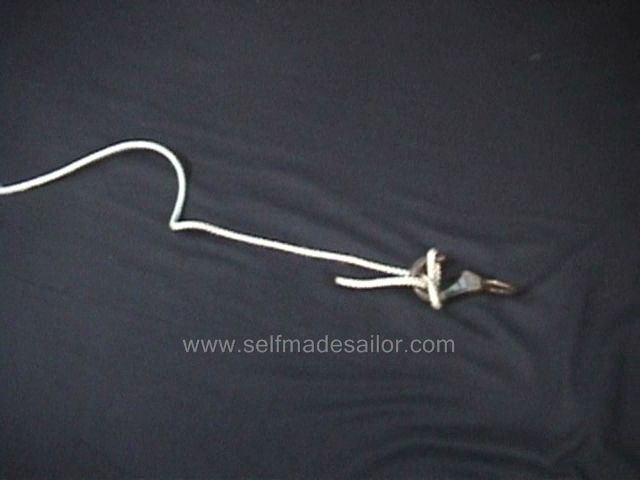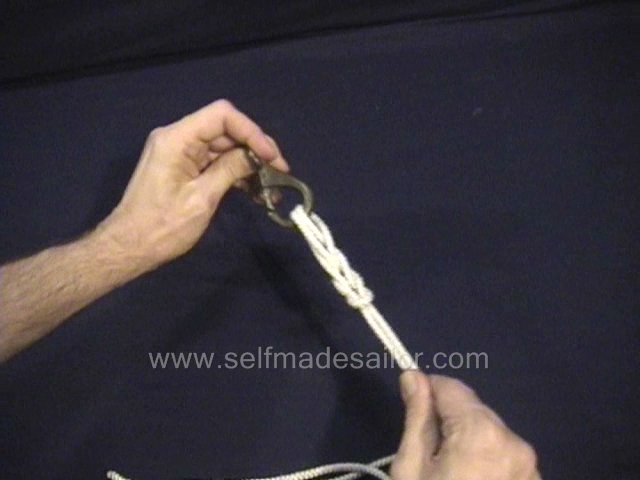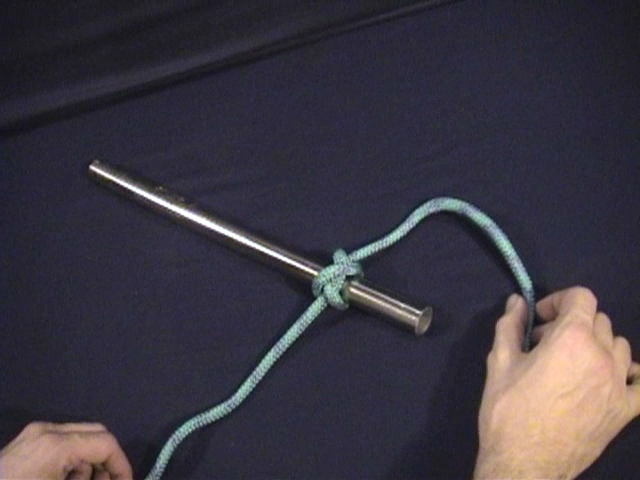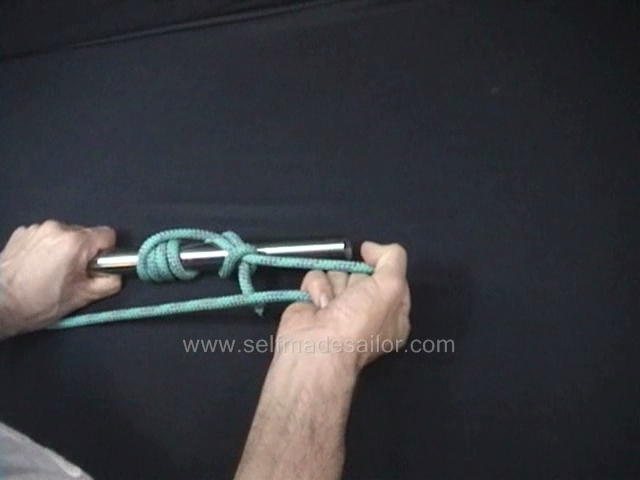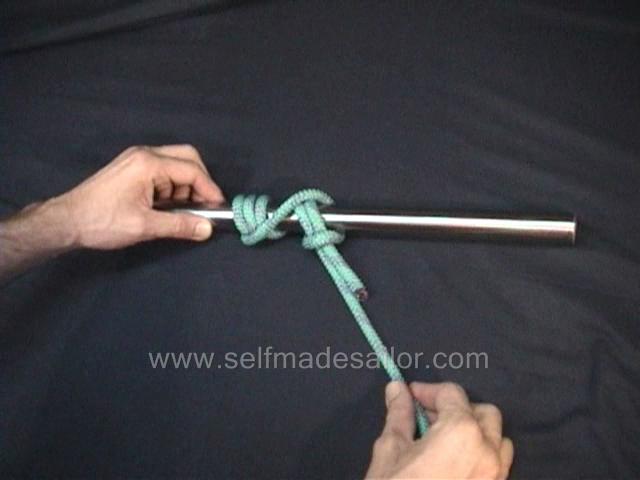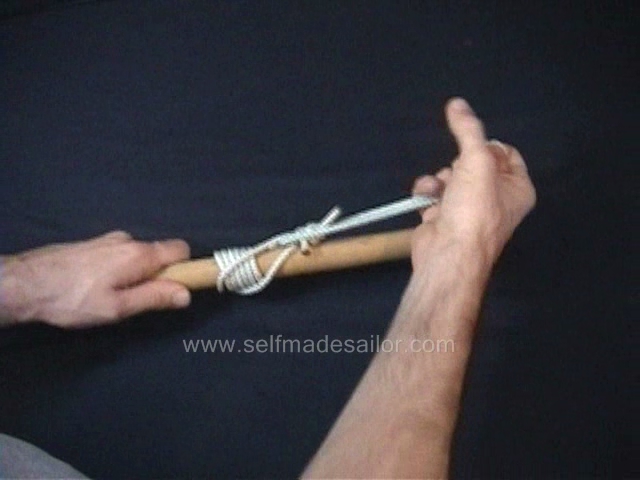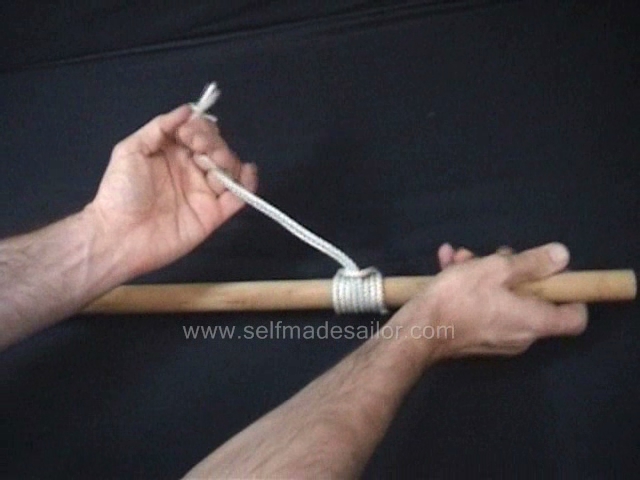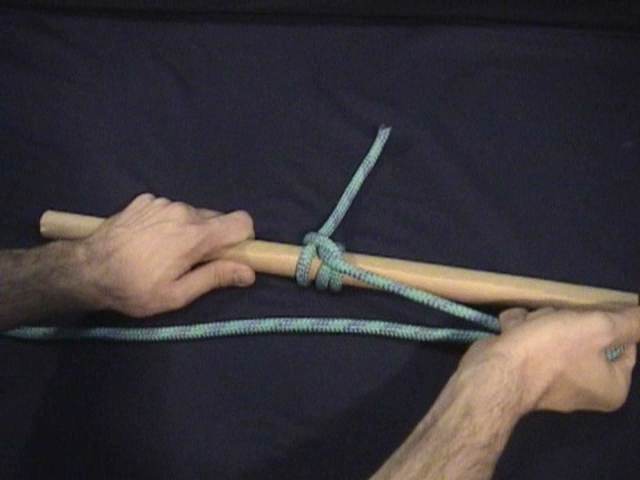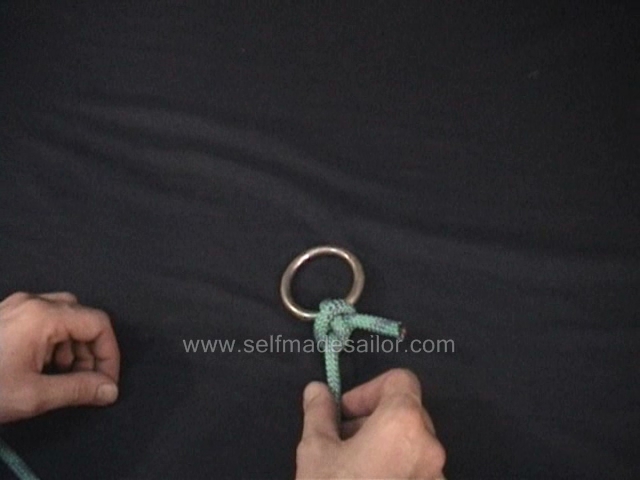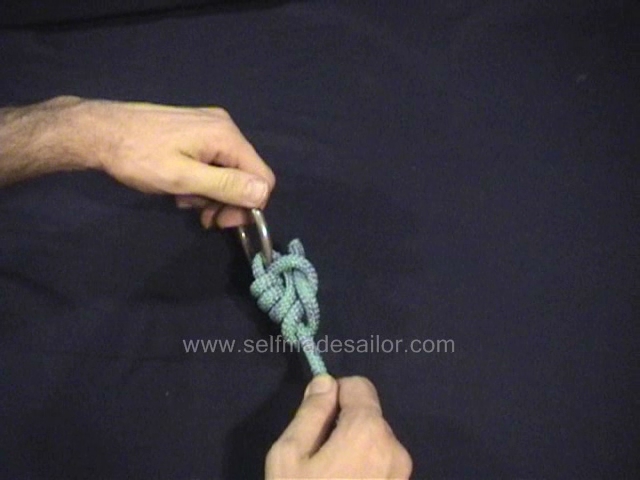Anchor Hitch or Bucket Hitch - Extremely secure method of attaching a line to an anchor, bucket or other object. In the first photo, it is finished with two half-hitches. In the second photo, it is finished more securely with a tack knot.
Back to the top | Back up to Quick Navigation
Bill Hitch - A secure way of attaching a rope to a lifting hook.
Back to the top | Back up to Quick Navigation
Cat's Paw - A quick and handy way to tie the bight of a line to a hook or other fixed point.
Back to the top | Back up to Quick Navigation
Clove Hitch - A quick way of securing to a post or a railing.
Back to the top | Back up to Quick Navigation
Constrictor Hitch - Excellent for closing the top of a bag or providing an unshakable grip. If it is tied tightly and not slipped as in the second photo, it is often extremely difficult or impossible to untie without tools or cutting.
Back to the top | Back up to Quick Navigation
Constrictor Hitch - Cast in a Bight - A very fast way of casting a constrictor hitch in a bight of rope.
Back to the top | Back up to Quick Navigation
Cow Hitch / Lark's Head - A quick, but not very secure, way of attaching a rope to a railing.
Back to the top | Back up to Quick Navigation
Draw Hitch - This is very useful for securing a line to a railing or other strong point where remote untying is required. The left strand will support a load, but if you pull on the right one, the entire knot comes undone. I used this frequently with my first boat to raise the mast. I'd tie one of these above the spreader with the load bearing end running forward to the bow roller, and then back to the cockpit. I'd use it to stand the mast up, and once the stays were secured, I'd give the other strand a sharp tug, and the whole thing (now 20' in the air at the spreaders) would tumble down to the deck - Very Handy!
Back to the top | Back up to Quick Navigation
Icicle Hitch - Method 1 - The Icicle Hitch is much better than the rolling hitch when the pull is parallel to the railing/other rope. It very strongly resists slipping, but takes a bit longer than the rolling hitch to tie and untie. This method requires that the knot is tied near the end of the object (post, railing, or other rope) so that a part of the line can be passed over the end of the object to complete the knot.
Back to the top | Back up to Quick Navigation
Icicle Hitch - Method 2 - This method of tying the Icicle Hitch allows the knot to be tied in the middle of a fixed object (railing, post, or other rope) without the need to pass part of the rope over the end of the object. If you're only going to learn one of these Icicle Hitch methods, pick this one - you'll be able to tie it anywhere without the limitations of the others. This, by the way, is the version of the Icicle Hitch that is described in Practical Sailor Magazine in the September and October 2009 issues (this website was mentioned in the October issue because of it!).
Back to the top | Back up to Quick Navigation
Icicle Hitch Variant - This variation on the Icicle Hitch allows it to be tied more quickly in the middle portion of the solid member - you don't need to be near the end as in the standard Icicle Hitch (method 1) in order to pass a loop over the end, and it is slightly faster to tie than the standard Icicle Hitch (method 2), although it may be slightly less secure.
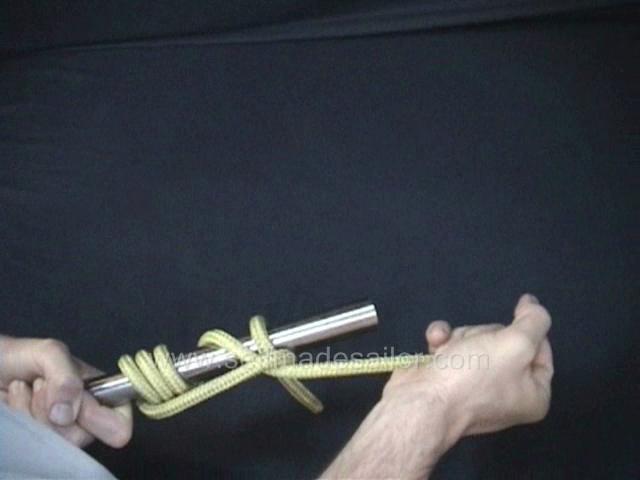 Under tension (click for a video) |
Loosely tied |
Tied to backstay, supporting my weight |
Back to the top | Back up to Quick Navigation
Klemheist Hitch - A gripping knot that strongly resists sliding when the pull is parallel to the object to which it is tied.
Back to the top | Back up to Quick Navigation
Prusik Hitch - A bi-directional gripping knot that strongly resists sliding when the pull is parallel to the object to which it is tied. It can be used as an aid to ascend or climb another rope.
Back to the top | Back up to Quick Navigation
Rolling Hitch / Tautline Hitch - A gripping hitch that resists slipping when the pull is parallel to the object to which it is tied (railing, pole, another rope). This can also be done with the rope passing around a peg or post and the hitch tied onto the standing part of the rope making an adjustable loop - very good for use as a guy for tens and tarps.
Rolling Hitch Variation - Good for connecting a rope to another rope or railing where the pull is parallel to the railing/other rope - resists slipping and is more secure than a standard Rolling Hitch.
Back to the top | Back up to Quick Navigation
Round Turn and Two Half Hitches - A secure method of tying a rope to a railing.
Back to the top | Back up to Quick Navigation
Tack Knot - A secure way of attaching a line to another object that will resist untying even if shaken and flogged.
Back to the top | Back up to Quick Navigation
Tarbuck Knot - A strong hitch that can be used to secure a line to a post, ring, or other fixed object.
Back to the top | Back up to Quick Navigation
Trucker's Hitch - A great way
to get a 2:1 purchase. If you put a block in the loop part, fix the left
hand part, and pull on the right hand part, you can exert twice the pulling
power than you could by just pulling on a plain rope.
Back to the top | Back up to Quick Navigation
